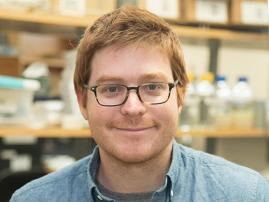
搜索网站、位置和人员

新闻与活动 活动信息
生命科学专题学术讲座 | Scott Coyle:Understanding and Engineering Cell Biology in Space and Time with Programmable Reaction-diffusion Systems
时间
2024年7 月30 日周二
16:00-17:30
地点
云谷校区E9-109会议室
主持
西湖大学生命科学学院特聘研究员 陈子博
受众
全体师生
分类
学术与研究
生命科学专题学术讲座 | Scott Coyle:Understanding and Engineering Cell Biology in Space and Time with Programmable Reaction-diffusion Systems
时间:7月30日星期二16:00-17:30
Time:4:00-5:30 PM, Tuesday, July 30,2024
主持人:西湖大学生命科学学院特聘研究员 陈子博
Host:Dr. Zibo Chen, Principal Investigator, School of Life Sciences
地点:云谷校区E9-109会议室
Venue:Room E9-109, Yungu Campus
主讲嘉宾/Speaker:

Dr. Scott Coylt, Associate Professor, University of Wisconsin-Madison, Department of Biochemistry
Scott Coyle earned his Bachelor’s degree in Biochemistry from the University of California, Berkeley. He went on to obtain his Ph.D in Biochemistry at UCSF in Wendell Lim's group, and commercialized technologies he developed as a student as a Founding Scientist at the immunotherapy startup CellDesignLabs. As a postdoc in Manu Prakash's lab at Stanford University, he defined how dynamic cell behaviors could emerge from patterns of oscillating control signals. In his own group, Scott is using synthetic biology to develop biochemical programming interfaces that expand our ability to understand and engineer dynamic cell biology. A major focus of his group is to develop synthetic circuits that self-organize molecules in space and time within the cell, with novel applications for imaging, systems biology, and cell-engineering.
讲座摘要/Abstract:
Cells self-organize molecules in space and time to generate complex behaviors, but we lack strategies for engineering spatiotemporal signaling. My group has developed programmable reaction-diffusion systems for the design of fast protein oscillations, patterns, and signaling circuits in mammalian cells, yeast, and multicellular systems. Our approach is based on repurposing bacteria-specific protein positioning systems to act as orthogonal spatiotemporal signaling nodes inside Eukaryotic cells. The resulting circuits can be used as “active probes” that amplify and encode endogenous cell dynamics in a barcoded frequency-domain data structure; or be used as “control signals” that synthetically pattern signaling activities or dynamically actuate biological processes like actin polymerization or protein condensation. By imposing additional spatiotemporal constraints on circuit components, these patterns and oscillations can be confined to specific subcellular compartments and react to competing organizing mechanisms like nuclear/cytoplasmic shuttling or polarized membrane recruitment. Our work establishes a suite of synthetic biology tools for visualizing, probing, and engineering cellular activities at length and timescales critical for biological function
联系人/Contact:
生命科学学院
于文越 yuwenyue@westlake.edu.cn

















